Rising Temperatures and Brain Health:10 Ways to Stay Safe in the Heat
While most of us are aware of the summer risks of dehydration, heat exhaustion, and skin cancer, brain health often goes unnoticed as a negative side effect of our warming planet. Heat exposure can devastate the human brain and have potentially damaging long-term effects.
It is crucial to understand the effects of hot weather on the body and know how to protect oneself during the peak summer months. This article will explore some practical tips to help you stay safe in the heat.
With global temperatures increasing in recent years, avoiding extreme heat exposure and keeping cool during extreme high temperatures is more vital than ever. Taking the correct precautions, especially during unusually hot periods or heat waves, will reduce the risk of heat-related conditions including migraines, seizures, stroke, and some forms of dementia, including Alzheimer’s disease.
Following some essential but simple tips can protect brain health during the hot weather:
10 Ways to Stay Safe in the Heat
- Stay Hydrated – As temperatures soar, keeping your body hydrated is crucial. Drink plenty of water throughout the day, even if you don’t feel thirsty. Opt for water-rich foods like fruits and vegetables to replenish electrolytes and prevent dehydration.
- Dress Right – Wear light-colored, loose-fitting clothing made from breathable materials to stay cool in hot weather. Protect yourself from the sun by wearing a wide-brimmed hat and sunglasses with UV protection.
- Find the Shade – When the heat becomes intense, find shade to take a break from direct sunlight. Whether outdoors or indoors, staying in the shade helps lower your body temperature and reduces the risk of heat-related illnesses. Even carrying an umbrella on a sunny day can help beat the heat.
- Take it Easy Outdoors – During peak heat hours, typically between 10 a.m. and 4 p.m., try to avoid strenuous outdoor activities. If you need to exercise or work outside, do so during the cooler morning or evening hours when the sun is less harsh than mid-day.
- Cool Down Effectively – Use cooling methods like cool showers, damp towels, or fans to lower your body temperature. If you can’t cool down in an air-conditioned area, at least ensure you have a well-ventilated space to prevent overheating.
- Eat Healthy – Boost your brain’s function by eating healthy foods such as fruits, vegetables, whole grains, healthy fats, and lean proteins, like the foods found in the MIND diet. Foods rich in nutrients support brain health and may even prevent age-related cognitive decline.

- Brain Exercise – Stimulate your brain regularly with puzzles, games, or activities that require critical thinking and problem-solving. It’s important to keep your mind active to maintain cognitive function, especially during extreme heat.
- Be Prepared – You should take precautions and protect your brain health in extreme temperatures by planning ahead.
- Screen Time – Too much exposure to electronic devices like smartphones and computers isn’t good during extreme heat. Mental fatigue from excessive screen time may be exacerbated by heat and the effects of excessive screen time on your body.
- Sleep Well – Healthy brains require restful sleep. Create a cool and comfortable sleeping environment to ensure you get enough quality sleep during hot nights (and during the days if you are a napper).
Rising Temperatures and Brain Health
While everyone is aware of the potential consequences of rising temperatures on our ecosystem, many of us don’t recognize the impact extreme heat can have on our brain health. Understanding the risks associated with extreme heat and climate change is not only vital for preserving our planet but also for safeguarding our own overall health, including our brain health.
Aviv’s unique medical program combines hyperbaric oxygen therapy (HBOT) with cognitive training, fitness training, and nutrition coaching to help improve the quality of life for people interested in healthy aging and those wanting to keep their brains sharp for as long as possible.
Contact Aviv Clinics Dubai by DP World to learn more about the Aviv Medical Program and how it can help improve your cognitive and physical performance.
MIND Your Diet for Better Brain Health
Some people follow a specific diet to lose weight, while others follow a diet to lower blood pressure or improve heart health. However, there’s one diet that has the potential to provide all those benefits plus delay or reduce the onset of cognitive decline: The MIND diet.
The MIND diet is a dietary program specifically designed for Neurodegenerative delay. This was formed by blending 2 highly effective diets: the Mediterranean and Dietary Approaches to Stop Hypertension (DASH) diet.
The Mediterranean diet mainly focuses on a heart-healthy eating plan. The DASH diet aims to treat or prevent high blood pressure.
The MIND diet is different because it is designed to target brain health and reduce the risk of some neurological diseases such as dementia. The MIND diet encourages the consumption of a variety of foods that ultimately benefit both the nervous system and cognitive health.
At Aviv Clinics Dubai by DP World, our clinical team includes dietetic support for every client due to the important role of nutrition when it comes to cognitive and neurological health.

Essentials for the Brain
For optimal health, your brain needs specific nutrients such as
- Omega-3 fatty acids for strengthening brain cell structure
- Choline to help regulate memory, mood, and cognitive performance
- Flavonoids for regulating inflammation and improving blood flow
- Vitamin E for protection against inflammation
The MIND diet provides all of the above mentioned essential nutrients. The diet omits or limits foods with ingredients that could negatively impact the brain, like saturated fats and trans fats, which are believed to be responsible for increasing beta-amyloid protein levels in the brain. This protein accumulates in the brain and can disrupt communication between brain cells and ultimately lead to brain cell death.
Eating foods that contain these unhealthy fats have been associated with an increased risk of Alzheimer’s disease. Examples of foods containing unhealthy fats are red meats, processed foods, and fried foods.
Foods containing antioxidants and vitamins—like what’s suggested as part of the MIND diet—may prevent the formation of these beta-amyloid plaques in the brain. Plant-based foods also contain phytonutrients and antioxidants which is beneficial for overall health.
More than half of your brain is made up of omega-3 fats. Your body needs foods rich in omega-3 fats to provide the necessary protective anti-inflammatory benefits. Omega-3 foods includes
Healthy fats, known as polyunsaturated fats, found in fish oils, flax seed, walnuts, and cold-water fish for example, and monounsaturated fats, which have anti-inflammatory properties, obtained from eating avocado, nuts, and seeds, all provide the essential omega-3 fatty acids that are beneficial for optimal brain health.

How to Make the MIND Diet Work for You
The MIND diet encourages a diversity of healthy foods designed to deliver a multitude of brain health benefits. It includes foods rich in phytonutrients, vitamins, and antioxidants such as:
- Leafy Greens and Vegetables: eat at least 1 serving of leafy greens e.g. spinach every day.
- Berries: they are particularly emphasized in the MIND Diet due to their potential cognitive benefits. Aim for at least 2-3 servings weekly.
- Nuts: vary the type of nuts you eat to gain the most benefit. One serving of nuts equates to one handful or roughly 30 grams.
- Olive oil and olives
- Whole grain: Oatmeal, quinoa, brown rice, whole-wheat pasta, and 100% whole-wheat bread.
- Fish: Choose fatty fish like salmon, sardines, trout, tuna, and mackerel for their high amounts of omega-3 fatty acids. Aim to have oily fish once weekly and white fish once weekly.
- Beans, lentils and soybeans.
- Poultry: chicken, turkey.
- Stay hydrated.
Other tips include cooking at home to have better control over the ingredients and cooking methods. Also, be mindful of your portion sizes and create a meal plan to make it easier to adhere to the diet.
Foods to Limit or Avoid
- Butter and margarine: limit your intake to less than one tablespoon daily.
- Cheese: if you have cheese, the best options are the white cheeses such as feta/Greek cheese, halloumi, cottage cheese.
- Red meat: aim for no more than two servings each week.
- Fried food: the MIND diet highly discourages fried food, especially from fast-food restaurants. Limit consumption to a maximum of once weekly.
- Pastries and sweets: limit your intake to a couple of times a week.

The Bottom Line
Researchers are learning more and more about the link between cognition and the MIND diet. Please keep in mind, the MIND Diet is not a guarantee against cognitive decline or neurodegenerative diseases, but it may help reduce your risk and promote overall health. As you age and the risk of developing memory disorders like dementia increase, laying a firm foundation for healthier eating will become vital to maintaining quality of life.
As leaders in brain performance, the expert clinicians at Aviv Clinics Dubai help keep your mind and body healthy for years to come. With hyperbaric oxygen therapy (HBOT) at its core, cognitive and physical training, and nutrition coaching, the ground-breaking Aviv Medical Program enhances cognitive and physical function and triggers the body’s natural capabilities at self-regeneration.
Contact us for a free consultation and learn about how our nutritional coaching will enhance the benefits of the Aviv Medical Program.
Senior Moments: How to Counteract Age-Related Cognitive Decline
No matter our age, we’ve all had them. Many of us even good-naturedly rib each other about occasional lapses in memory or focus.
Next Saturday, July 22, is World Brain Day, established to promote the importance of brain health.
Our brains are exceptionally complex and manage everything we experience in life: our actions and reactions, senses, emotions, and how we process the world around us.
Over our lifetimes, our brains change more than any other organ in our body. As we reach our golden years, however, our brains change rapidly and many of us notice negative changes in cognitive skills like memory, attention, and our ability to learn.
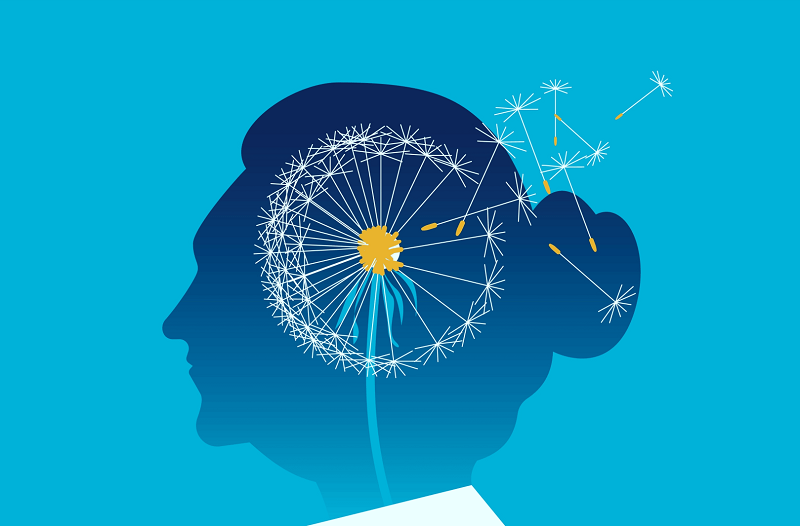
Why do these changes occur?
Many factors contribute to brain health, but there are three significant factors I’d like to discuss that can lead to those annoying “senior moments.”
First, our brains begin shrinking long before we reach senior status. Brain volume begins decreasing in our 40s, primarily in the frontal lobe and hippocampus. These areas of our brain are essential for our memories, as well as attention, learning, problem-solving, and even our personalities.
Second, as we age, our bodies become less efficient at dispersing oxygen. While our brains may only account for about 2% of our total body mass, they need about 20% of the oxygen-rich blood pumping through us. As we grow older, our blood vessels can narrow, weaken, or become blocked, limiting blood and oxygen flow and hindering our brain cells’ ability to function.
Finally, the white matter in our brains deteriorates over time. These bundles of nerve fibers pass impulses and information between the different areas of our brains. White matter atrophy slows these lines of communication, impacting how quickly we process information.
Can changes to the brain be stopped?
Some brain atrophy is inevitable. Fortunately, there are many ways to slow the progression of these changes and improve our brain health, no matter our age.
First, take measures to control chronic conditions like high blood pressure, high cholesterol, and diabetes, which all have been linked to cognitive decline.
Taking medications as directed, reducing alcohol intake, eating a healthy diet and exercising regularly will both manage these conditions and improve your brain health. And of course, if you smoke, quit now.

Speaking of diet and exercise, both have significant impacts on brain function.
The MIND Diet (Mediterranean-DASH Intervention for Neurogenerative Delay) is designed to defer the onset of cognitive decline. This diet is high in omega-3 fatty acids to strengthen brain cell structure, flavonoids for improving blood flow, and antioxidants to reduce the buildup of plaques. Brain foods on this plan also include berries, nuts, olive oil, whole grains and beans.
You might think that exercise is only beneficial for our muscles, bones, and heart, but it’s also essential for brain health.
Cardiovascular exercise gets our blood pumping, feeding our brains with oxygen-rich blood.
Weight and resistance training has been found to prevent hippocampus shrinkage, improving memory and executive function. Both should be part of your exercise routine at least three days a week.
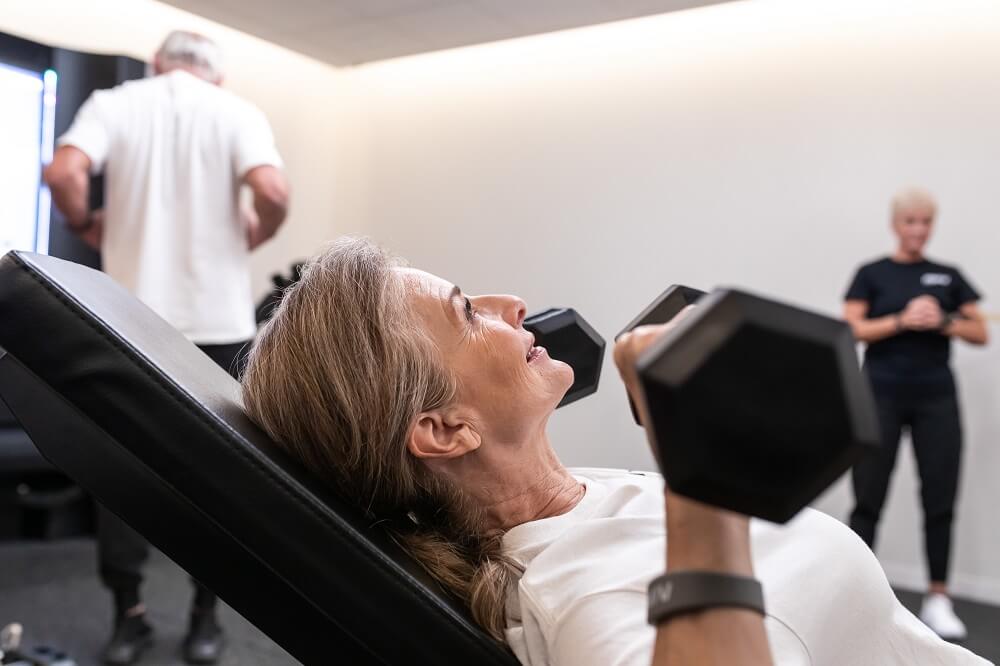
Staying mentally and socially active can also slow the progression of age-related cognitive decline. Learning new skills, playing games like crosswords or sudoku, and spending time with others all help keep our brains active and alert.
Finally, oxygen and blood flow can also be improved through interventions like the Aviv Medical Program, a holistic treatment program that includes nutrition coaching, cognitive exercises, physical training, and a unique hyperbaric oxygen protocol designed for optimizing brain performance.
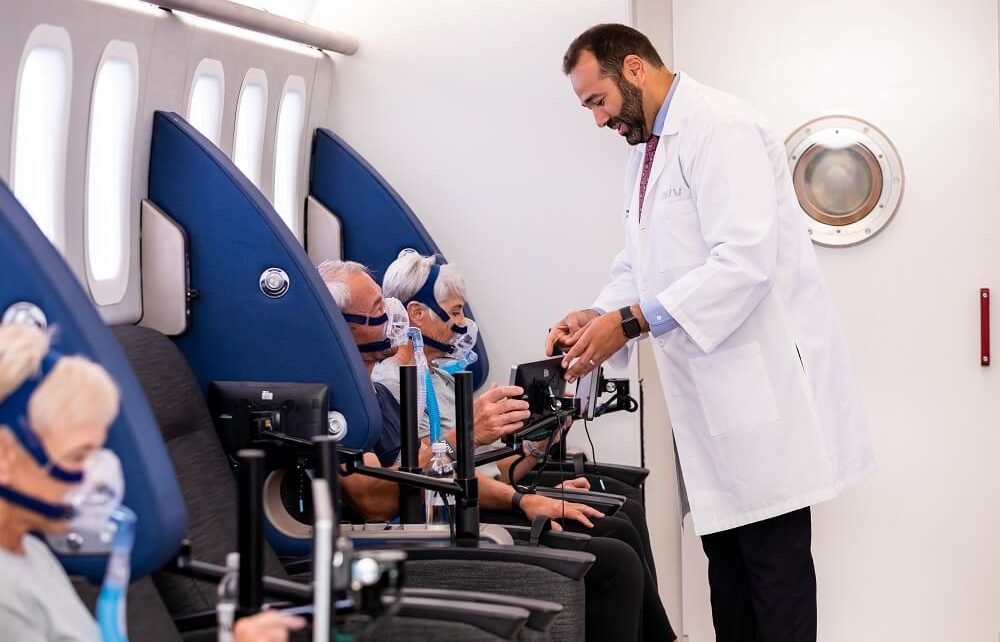
At Aviv Clinics Dubai, we specialize in treating age-related conditions.
To learn more about what we do we invite you to can contact the clinic and schedule a free consultation with one of our physicians.
One of the healthiest agers I know is Dr. Joseph Maroon. At 83 years young, Dr. Maroon is team neurosurgeon for the Pittsburgh Steelers and vice chairman of the Department of Neurological Surgery at the University of Pittsburgh Medical Center.
He’s also an eight-time Ironman triathlon finisher and an Aviv Clinics alumnus.
Watch Dr. Maroon’s unique story:
Your Health Is Your Wealth: The Importance of Investing in Your Health
The daily choices we make and the activities we engage in impact our quality of life. While health problems and expenses might be an expected norm with age, there are ways you can minimize or even avoid them altogether.
At Aviv Clinics Dubai, we believe making more conscious decisions today will give you the healthspan you deserve. Learn the importance of investing in your health and nine ways to get started.
Note: Speak to your doctor before you pursue any lifestyle changes.
1. Consider the MIND Diet
Eating healthy has been a consistent mantra over the years, and for good reason—there is a connection between diet and disease. A healthy diet is the foundation for feeling good.
While there are numerous diet trends out there, there is one truly worth your time and investment—the MIND diet.
The Mediterranean-DASH Intervention for Neurodegenerative Delay (MIND) diet is a blend of two highly effective diets:
- Mediterranean: Consists of a heart-healthy eating plan
- DASH: Aims to address hypertension or high blood pressure
Studies illustrate the MIND diet is “associated with reduced incidence of Alzheimer’s disease.”
Sticking to this diet that entails a variety of fruits and vegetables provides anti-inflammatory effects on the brain. This impact can strengthen brain cell structure and help regulate anxiety and mood.
2. Engage in Intermittent Fasting
We know—fasting doesn’t sound like the most exciting thing. But consider intermittent fasting. Not only can you achieve a healthy body composition, but you can also improve your brain health—all without strict dietary restrictions.
Intermittent fasting is a dietary lifestyle that comprises alternating periods of eating and fasting and limiting the number of hours you consume calories during the day/week.
This metabolic switching:
- “Promotes neuroplasticity and resistance of the brain to injury and disease”
- May “decrease the progression of Alzheimer’s disease in mice through changes to the gut microbiota”
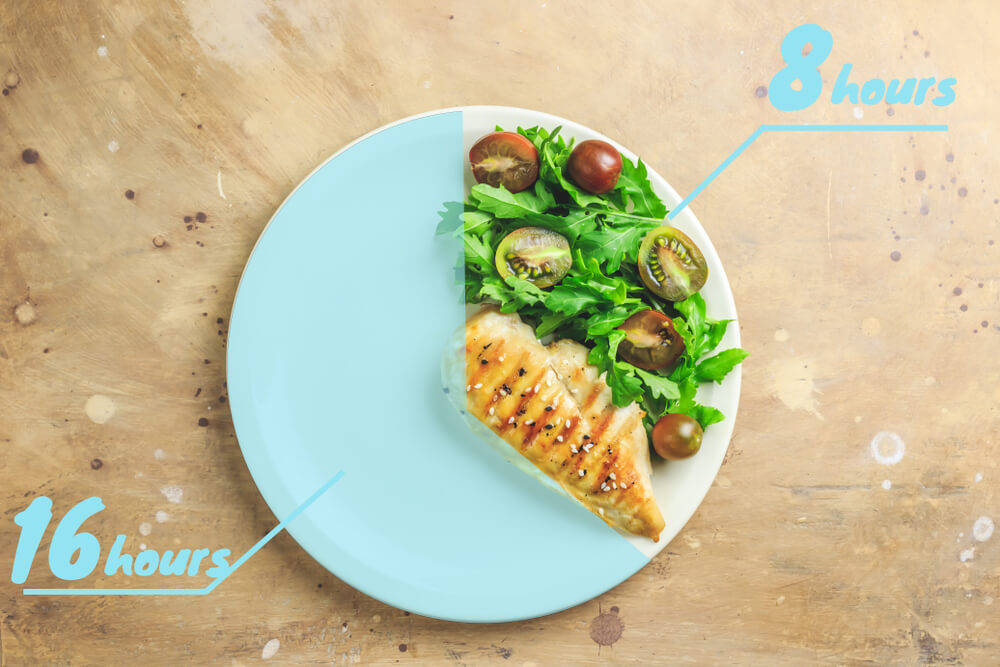
3. Stay Educated on Fall Prevention Tactics
“Falls in older adults are a reasonably common occurrence.” Conditions that become prevalent as we age (e.g., muscle weakness, osteoporosis, and balance and gait problems) make us more susceptible to falls.
The key ingredient to prevention? Exercise. This entails:
- Strength training
- Cardio training
- Balance training
- Flexibility training
Other fall prevention tactics are just as important.
- Keep your home clear of clutter and trip hazards such as cords, books, shoes, etc.).
- Install grab bars in the bathroom and handrails in the hallways and stairways.
- Avoid wearing clothing that drags on the ground.
- Wear non-slip socks or shoes around the house.
- Take a pause after standing up and before beginning to walk.
4. Find Helpful Ways to Cope with Stress
Stress is inevitable, and the body and mind are biologically equipped to handle it. But sometimes, when the stress gets overwhelming, it can have adverse effects. ”Stress affects not only memory and many other brain functions, like mood and anxiety, but also promotes inflammation.”
Chronic stress can:
- Kill brain cells.
- Cause memory decline.
- Negatively impact mental health.
Whether you are grieving or dealing with a major change in your life, it’s essential to find healthy coping mechanisms for stress:
- Make time for physical activity: At Aviv Clinics, we recommend 30 minutes of exercise three days a week at a minimum. Exercise benefits the brain by releasing endorphins, helping relieve pain, and improving mood. The key is to find an activity you enjoy—this will make exercise fun and feel less like a chore.
- Be conscientious about screen time. Experts say, “The goal isn’t to eliminate screens from your life; it’s to imbue the time you spend on screens with ‘intentionality.’” When used wisely and with purpose, technology offers worthy benefits. But misusing it can cause more harm than good. Thus, stay aware and focus on balancing screen time with other activities.
- Meditate. Not only is meditation a great activity to do instead of “doom scrolling” on your screen, but meditation may promote several benefits such as “reduction of cognitive decline” and “increase in quality of life.”

5. Focus on Body Composition Instead of Weight
A low number on the bathroom scale doesn’t necessarily mean all is well. Indeed, society’s obsession with the scale can lead to problems like declining muscle mass—a condition that will do more harm than good later in life.
So toss that unhealthy relationship with the bathroom scale. Instead, look at your overall body composition.
For example, Aviv Clinics uses the seca scale to get a precise rundown of the meaning behind a person’s weight. This scale helps us develop an accurate and customized treatment plan—losing body fat, gaining muscle, or a combination of both.
Speak to your doctor to gain a comprehensive assessment of your body composition so you can make appropriate, personalized goals.
6. Stick to a Consistent Sleep Schedule
Since the sleep hormone melatonin naturally decreases with age, it’s vital to set up healthy sleeping habits. This entails turning off all electronics an hour before bedtime and getting in bed at the same time each night. Doing so will promote natural circadian rhythms and maintain cognitive health.

7. Engage in Games
Investing in your health doesn’t have to be boring—it can include games!
That’s right, playing brain games is a fun and active way to train your brain. Researchers report “the effectiveness of cognitive intervention in maintaining cognitive health over the long-term.”
The brain functions similarly to muscles building muscle fibers after exercise—it promotes new neurons and neuronal connections after participating in games.
8. Listen to More Music
When was the last time you truly listened to music? What kinds of images and memories did it elicit?
Music offers far more advantages than helping you get through a grueling drive or setting the tone for a party. The best part is these benefits are backed by research.
Studies illustrate music can:
- Improve “cognitive function in people living with dementia, as well as quality of life after the intervention and long-term depression.”
- Reduce “measures of anxiety in a population of residential care patients with dementia.”
- Provide “better sleep quality” for “adults who listened to 45 minutes of music before going to sleep.
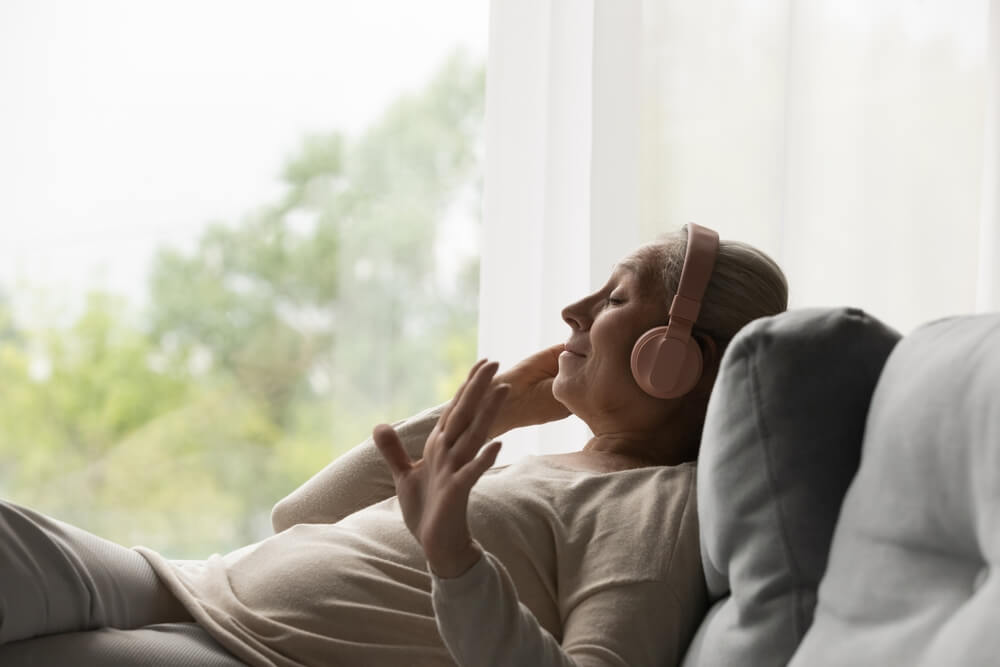
9. Find a Research-Backed HBOT Program
Hyperbaric oxygen therapy (HBOT) is a treatment in which the patient breathes 100% pure oxygen in a pressurized chamber. Aviv’s luxury, state-of-the art hyperbaric oxygen therapy suites are the largest and most advance in Dubai and the surrounding region.
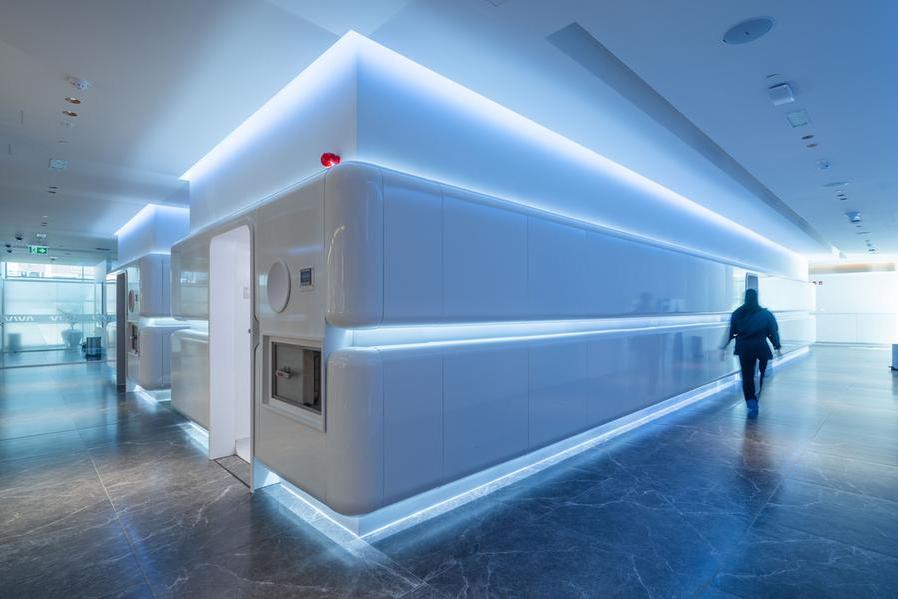
Several studies illustrate the potential of HBOT in improving cognitive, physical, and psychological performance when administered in a specific protocol. Aviv Clinic’s HBOT protocol fluctuates oxygen levels during each hyperbaric session. This system increases oxygen levels in the body up to 20 times higher than normal and boosts your brain’s ability to heal.
The unique medical program at Aviv Clinics consists of a treatment program that include this same research-backed HBOT protocol along with cognitive training, dietary coaching, and physical performance training in a physician-designed program tailored to each client’s needs.
This holistic approach gives each patient the personalized care they deserve for their unique health conditions. Our clients have optimized their athletic performance with HBOT and have found relief from debilitating medical conditions such as stroke and traumatic brain injury.
Couple Pursues Healthy Aging & Cognitive Decline Prevention | Bob & Laurie’s Story
Invest in Your Health at DP World’s Aviv Clinics Dubai
The Aviv Medical Program stands by a holistic treatment program that targets all areas discussed above. A series of independent clinical trials illustrate how our program helps treat the symptoms of different health conditions.
5 Ways to Maintain Healthy Cognitive Ability as You Age
You want to stay sharp as you get older, we get it. Everyone hopes to age gracefully and enjoy their golden years full of new experiences and good memories. But as you know, this doesn’t always happen. Some people, as they grow in years, lose mental clarity and ability. Often this happens so gradually that it’s like watching hair grow—a loss of cognitive ability isn’t even noticed until it’s too late to do much about it.
But don’t worry, there is plenty of good news.
There are scientific, practical ways to help you maintain optimal brain health as you get older. As a health and industry leader in cognitive and physical performance, Aviv Clinics provides valuable, research-backed information to help you control your cognitive ability long into your twilight years.
5 Categories of Cognitive Skills You Want to Maintain
When we talk about cognitive ability, what we’re referring to is a set of seven skills that work together to help you in your daily life:
- Short-term memory
- Long-term memory
- Attention—sustained, selective, and divided
- Processing speed, including visual and auditory
- Logic and reasoning
Our brains can do brilliant and beautiful things! We simply need to nurture their natural abilities, so we can slow (or prevent) mental decline.
How to Improve Cognition – Follow Your Doctor’s Orders
Knowing how to improve cognitive skills is the first step toward achieving your goal of staying sharp and full of life for many years to come.
First, are you at risk of cognitive decline as you age?
- Do you have depression?
- Are you lacking sufficient mental activity?
- Are you avoiding physical exercise?
- Would your doctor consider you obese?
- Do you have high blood pressure?
- Have you been diagnosed with Type 2 diabetes?
- Are you a smoker?
To significantly lower your risk of cognitive decline, follow your doctor’s orders and incorporate these five must-have lifestyle adjustments to enhance your cognitive ability.
1. Sink Your Teeth into a Delicious Mediterranean Diet
Good nutrition goes a long way in maintaining a healthy brain and body. Studies show an association between high adherence to a Mediterranean diet and reduced risk of Alzheimer’s disease.
A Mediterranean diet entails:
Eating plenty of:
- Fruits and vegetables
- Fish and seafood
- Nuts and legumes
- Whole grains
- Unsaturated oils (extra-virgin olive oil and avocado oil)
Eating in moderation:
- Poultry
- Eggs
- Cheese
- Yogurt
Eating rarely:
- Red meat
- Refined grains
- Added sugar
- Highly processed foods
Read MIND Your Diet for Better Brain Health for some very interesting and informative guidance from an AVIV dietician, Kathryn Parker, RD, LD/N.
2. Increase Brain Metabolism through the Heart, Muscles, and Mind
Research links moderate exercise to increased brain metabolism and improved overall cognition. Exercise need not be too strenuous, but getting the heart rate up, building muscle, and pumping oxygen through your lungs and blood is very beneficial to your mental health. Physical activity can also improve heart conditions (one of the sources of cognitive decline).
Great examples of moderate physical activity include:
- Jogging or brisk walking, especially up an incline or in the sand
- Stretching morning and night
- Gardening and other household tasks
- Cycling either on a stationary bike or along a path
- Tai chi and yoga
- Playing outside with your children or grandchildren
If you’re an athlete who wants to up your game, Aviv will help you achieve your physical goals. Watch the stories of success.
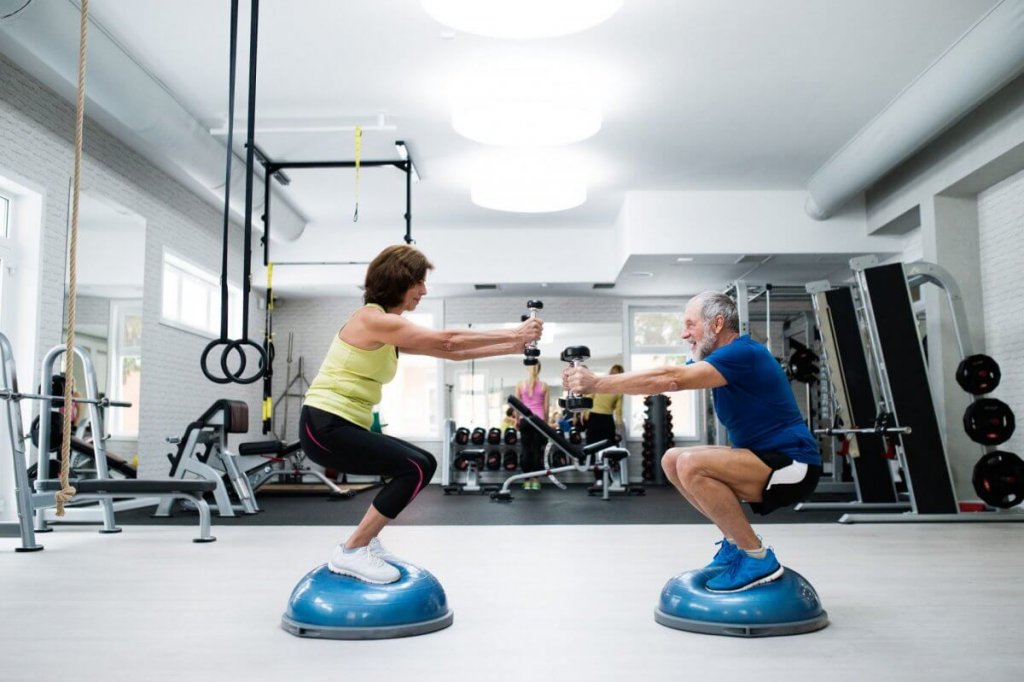
3. Don’t Let Stress Induce Deleterious Effects
If not managed, chronic stress often impairs memory retrieval and information acquisition, even inducing deleterious effects on brain structure and cognition. To help you bounce back from a stressful situation, consider:
- Engaging in physical activity
- Writing your thoughts in a journal
- Getting more sleep—it’s in the downtime that the brain flushes toxins out and cleans itself, allowing the repair you need from spikes of stress
- Doing relaxation techniques such as meditation or breathing exercises
4. Actively Build Neural Pathways
Identify hobbies or activities that keep your mind engaged. For example, one study discovered older adults who took up new body-connected activities that worked the brain in new ways experienced more memory improvement than those who did not.
Here are a few ideas when wondering how to improve your cognitive skills:
- Learn a new language and travel to where you can use it.
- Begin quilting or other detail-oriented crafts.
- Study photography, take pictures, edit them, and share.
- Try reflective therapy, like journaling, to revisit past negative memories and rewrite them more positively (“what I’ve learned” or “how it made me grow”).
- Invest (especially mentally and physically) into your child’s or grandchild’s hobby. Do they play lacrosse? Learn the rules of play and volunteer for the team. Do they have a knack for mathematics? Be their study buddy.
5. Stay in Touch with Your Trusted Physician
It’s essential to discuss cognitive decline with a trusted physician. The more you understand how your health can affect your brain function, the more you can do to safeguard your cognitive vitality. Discuss your options and advocate for yourself to get next-level care that will keep you healthier for the long term.
Fight Cognitive Decline with Aviv

Maintaining your overall health is beneficial for the longevity of your life. Fight cognitive decline with the Aviv Medical Program. Every person’s body and health are unique, and your medical treatment program should reflect that.
Aviv is the leader in brain performance—our program will keep your brain at its best. Our diverse team of medical professionals will provide the customized attention you need to maintain optimal cognitive health and reverse cognitive decline.
Contact us to learn how we can help.
The Effect of Coffee on Brain Health
Pour-over, solo, drip, French-pressed – however you enjoy your coffee, it may be doing more for you than just getting you going in the morning. Drinking coffee may also protect you from a variety of health conditions, so long as it is consumed in moderation.
For decades, coffee had a poor reputation because of early studies that deemed it a carcinogen and linked it to an increased risk for heart disease. Recent research now suggests that drinking coffee, including decaffeinated coffee, may actually provide a variety of health benefits when consumed in moderation.
The Benefits of Coffee on Brain Health
Some of coffee’s health benefits are commonly known, including that it boosts metabolism and increases energy levels. Lesser known, but perhaps more important benefits of coffee are that it also:
- Enhances brain function
- Lowers the risk of developing dementia and Alzheimer’s disease
- Decreases the risk of stroke and depression.
Beyond brain health, moderate consumption of coffee also helps reduce the risk of some cancers, type 2 diabetes, and heart disease.
Coffee’s Key Ingredients
Caffeine is just one of about 1,000 chemicals found in coffee beans, but is the best known. A stimulant, caffeine delivers a boost of energy and helps provide focus. It locks into the adenosine receptors in the brain, which cause drowsiness, and counteracts the sleepiness response by blocking the function of the receptors. Instead of feeling drowsy, caffeine stimulates the brain’s production of norepinephrine and dopamine, which is what leads to increased focus and alertness.
In addition to caffeine, coffee also contains beneficial polyphenols and antioxidants, which fight inflammation and protect against some diseases.
Polyphenols are organic compounds found in the coffee plant. They contain anti-inflammatory properties that have the potential to prevent or reduce the risk of certain cancers and other chronic health conditions. Some polyphenols may also protect against neurodegenerative diseases, including Alzheimer’s, Parkinson’s, and Huntington’s. Consuming polyphenols also may help regulate metabolism, weight, and cell production.
Other beneficial components in coffee include vitamin B2 (riboflavin); vitamin B5 (pantothenic acid); vitamin B1 (thiamine); vitamin B3 (niacin); folate, manganese, potassium, magnesium; and phosphorus.
Coffee beans also are enriched so that when they are ground, blended, and consumed, provide some pre- and probiotic properties for good gut health.

The Cons of Drinking Coffee
While coffee has many health benefits, it can also have some negative effects. For example, it can:
- Disrupt sleep
- Cause anxiety and jitteriness
- Lead to an addiction to caffeine
- Cause withdrawal symptoms (headache, fatigue, brain fog, and irritability) when abstaining
- Increase feelings of anxiety and agitation in those with anxiety disorders
Moderating consumption is key to enjoying its benefits.
How Much Coffee Should You Drink?
As with most foods, coffee is a healthy beverage when consumed in moderation. The Dietary Guidelines for Americans recommends no more than five cups a day or on average 400 mg of caffeine. Another reason for moderate consumption is because too much, especially after mid-day, could interfere with getting a good night’s sleep and may create feelings of anxiety.
Optimizing the Benefits of Coffee
While coffee has many health benefits, adding refined sugar, artificial sweeteners, and/or creamers add calories and create an unhealthy beverage.
“The extra calories, sugar, and saturated fat in a coffee house beverage loaded with whipped cream and flavored syrup might offset any health benefits found in a basic black coffee.” – Harvard School of Public Health

How you brew your coffee also affects the health benefits it imparts.
For example, using a paper filter or checking coffee pods for built-in filters helps prevent the passage of unhealthy chemicals present in coffee as it filters. Some of these chemicals can raise levels of LDL, or the “bad” cholesterol.
The Bottom Line
Coffee has many health benefits, when drunk in moderation. Using high quality beans, brewing it with a paper filter, and limiting additions such as refined sugars and creamers, can optimize the impact of coffee on your brain health.
Aviv Clinics Dubai – brought to you by DP World delivers a highly effective, science-based treatment protocol to enhance overall brain performance, extend healthspan, and improve the cognitive and physical symptoms of conditions such as mild cognitive decline, fibromyalgia, and Lyme disease. The Aviv Medical Program’s intensive treatment protocol uses hyperbaric oxygen therapy and includes nutrition management and dietitian support to optimize your diet for better brain health. Based on over a decade of research and development, the Aviv Medical Program is comprehensive and customized to your needs.
Contact us to learn more.
Choosing the Right Hyperbaric Oxygen Therapy Program for You
Hyperbaric oxygen therapy (HBOT) has become available for more health conditions to help extend healthspan, improve physical performance, and manage cognitive decline. As more facilities providing HBOT open, different types of HBOT technology and treatment protocols have appeared. It has become increasingly important to understand the differences and identify the option best able to meet your health goals and needs.
What are the types of hyperbaric oxygen therapy chambers?
There are two types of hyperbaric oxygen therapy chambers: multiplace and monoplace chambers.
Multiplace chambers are large, modern, comfortable rooms that feature cushioned seating. They are designed much like a first class airplane seat, with personal entertainment tablets. Aviv Clinics clients receive their HBOT treatments in spacious multiplace chambers that allow them to sit comfortably and engage in brain training during the course of the session.

Aviv Clinics – Multiplace chamber HBOT suite
Monoplace chambers are rigid glass or plastic tubes that are meant for one person. Patients must use them lying down. Most clinics use monoplace chambers. People who are claustrophobic in small spaces might find them confining. People sometimes associate them with hospital burn units, wound care facilities, or MRI machines. They are sometimes even referred to as “Michael Jackson” tubes because the singer reportedly used this method from time to time.
What treatment program is used for HBOT?
HBOT treatment programs can range widely, so it is important to understand which protocol best fits your health goals. Some facilities offer single, spa-like experiences, while others provide basic HBOT for a few sessions to address specific issues. On the other end of the spectrum are comprehensive, research-backed programs, such as the Aviv Medical Program, that address issues such as mild cognitive decline, stroke, Lyme disease, PTSD and fibromyalgia.
Basic hyperbaric oxygen therapy for specific issues, such as gangrene, non-healing wounds, infections, and “the bends” experienced by some divers, has been used for decades. For these conditions, the number of HBOT treatments can be as few as one or two sessions.
A comprehensive HBOT treatment protocol, like the Aviv Medical Program, addresses issues that affect your healthspan and physical and mental performance. It differs not only because of the length—every client does at least 60, two-hour HBOT “dives” throughout the 12-week program—but also because it encompasses more than just hyperbaric oxygen therapy. Clients receive individualized exercise and nutrition coaching, as well as regular check-ins with a multidisciplinary team of physicians, physiologists, nutritionists, neuropsychologists, and other health professionals.
Be aware of clinics that offer unclear treatment protocols. Some of these facilities promote their services as more of a spa-like experience, with no standardized treatment plans or science-backed evidence to support their claims.
Is the HBOT program backed by research?
Review whether the facility you are considering has developed its treatment protocols based on scientific, peer-reviewed research. Every treatment you choose has the ability to affect your body positively or negatively, so doing your research and choosing a reputable clinic is paramount.
The pressure and length of treatments, as well as the oxygen dosage used in Aviv’s HBOT treatments, are the result of over a decade of peer-reviewed scientific research. This comprehensive protocol has been shown to maximize the body’s own regenerative power. It is a unique, proprietary system of modulated oxygen exposure that is only offered by Aviv Clinics.
What type of expert/clinician support is available?
An important consideration when choosing your hyperbaric oxygen therapy clinic is the type of expert support available to provide treatment and guidance. The best treatment protocols include a multidisciplinary team.
At Aviv Clinics, clients have access to an expert clinician team that includes physicians, physiologists, psychologists, and nutritionists throughout the 12-week program. The team continues to stay in contact with clients even after the treatment course to ensure they continue their progress. Subsequent six-month follow-up assessments are also part of the program and help clients continue to track their progress.
What assessments are performed?

Tracking progress from the start of the treatment course is needed to confirm whether your health goals were reached. Some clinics include scanning and diagnostic assessments as part of their offerings.
Aviv Clinics offers the industry’s most comprehensive battery of cognitive and physical tests to set a baseline for each client at the start. The Aviv Medical Program assessments include:
- In-depth medical intakes performed by our expert clinical team, including physicians, neuropsychologists, physiologists, physical therapists, and nutritionists
- Full battery of computerized cognitive testing that includes evaluation of your memory, focus, information processing speed, attention, and executive function
- Extensive blood tests
- Advanced MRI brain imaging protocols (anatomical, perfusion, microstructure)
- CPET – a heart and lung performance test to measure how the body produces energy with and without oxygen
- Body composition analysis, including gait, balance, and overall motor functions
- Full genetic sequencing
- Cellular performance tests including a stem cell count and assessment of aging biomarkers such as telomeres, which help to calculate your true biological age
The assessments are repeated at the end of the program. This allows our team to provide clients with a full report, summarizing progress throughout the program, and providing the data and analysis necessary to move forward with health and wellness goals.
Will there be medical support during the HBOT session?
Having professional oversight and support during your HBOT treatment is a critical consideration. At facilities that use small, monoplace tubes, clients are typically monitored through cameras.
At Aviv Clinics, a nurse is present inside the HBOT suite to support clients and ensure appropriate treatment during all hyperbaric dives. A trained technician also monitors the session from outside of the chamber. A physician is on site at all times during treatments as safety is Aviv’s top priority.
Is a comprehensive progress report provided?
Many condition-specific or other facilities work on a session-to-session basis. Even if a long-term recovery plan is the purpose, they may only track progress per HBOT treatment.
Aviv Clinics takes a holistic approach by providing all-encompassing and in-depth reports. After clients complete the Aviv Medical Program, the clinician team provides a detailed before-and-after cognitive and physiological analysis, showing their markers of improvement. Clients review their progress, one-on-one with the physician, who explains and interprets the data, and provides next steps.
The Bottom Line
An HBOT treatment protocol that is backed by research, supported by a multidisciplinary and caring clinician team, and a full range of assessments to show progress are all important considerations for choosing the right HBOT clinic to meet your health goals.
The Aviv Medical Program is rooted in extensive scientific research and trials conducted on HBOT treatment for a variety of conditions, including reversing the signs of biological aging, mild cognitive decline (MCI), post-stroke recovery, Traumatic brain injury (TBI), Lyme disease, and Fibromyalgia.
Contact Aviv Clinics to learn more about the Aviv Medical Program and how it can benefit you.
Rehabilitation Options, Including Hyperbaric Oxygen Therapy (HBOT), for Stroke Patients
Strokes are “a leading cause of serious long-term disability” in the United States. Given that “87% of all strokes are ischemic” or caused by artery or vein blockage, it makes sense that most patients suffer long-term functional impairments.
These impairments can range from paralysis, speech difficulties, and sensory issues to a host of other cognitive dysfunctions. Additionally, many stroke patients have had a stroke before—“nearly 1 in 4” survivors have suffered at least one stroke previously.
Rest assured, multiple rehabilitation options are available for stroke patients, including hyperbaric oxygen therapy (HBOT). We dive into the key details below.
Remember that each person’s medical condition and background are entirely unique. Thus, speaking with a physician about treatment options is essential to getting back to optimal health.

What Are the 3 Common Stroke Relief Options?
Stroke relief generally entails working with a diverse medical team of physicians, nurses, and therapists. This support team may recommend one or more of the following options:
- Speech therapy: Stroke patients can experience speech challenges, ranging from slurred world to significant difficulties with oral communication or understanding people (aphasia). This is due to damage to the “left side of the brain that controls speech and language.” Cases like this often merit speech therapy.
Patients work with speech-language pathologists (SLPs) to relearn techniques such as:
- Controlling mouth and throat muscles to speak more clearly and adequately swallow
- Participating in cognitive language exercises to restore communication and comprehension skills
Research illustrates early speech intervention with aphasia patients “had a massive increase in their ability to communicate at 12 and 26 weeks after their stroke.” Patients could speak better and exhibited less difficulty finding and using the right words.
- Physical therapy: A physical therapist (PT) engages patients in movement exercises to help them reacquire motor skills. PTs generally help stroke patients relearn activities such as walking, sitting, standing, and switching from one movement to another.
Medical experts believe consistent PT lowers “risks of hospital readmission within a month after discharge” because it helps patients:
- Restore movement and accomplish tasks
- Plan for the next step of post-acute care (e.g., patient rehab facility, skilled nursing facility, or home care assistance)
- Occupational therapy: Occupational therapists help patients carry out everyday activities. They aim to help stroke patients live as independently as they can. OTs work with post-stroke patients to assess how the stroke has affected their lifestyle.
For those who have difficulties dressing, cooking, or bathing, the OT will find solutions to help carry out these activities of daily living to the best of their ability. These statistics outline the importance of OT in the recovery process.
- One study of Medicare claims data found that “Rehabilitation services including physical therapy and occupational therapy play important roles in promoting functional recovery and preventing deconditioning during acute hospitalizations.” However, “Only 61% of patients with ischemic stroke received both physical therapy and occupational therapy services in the acute setting.”
One study notes that patients who participated in OT programs focused on impairment and basic living activities “progressed to more advanced activities over time (e.g., less bed mobility, more home management).”
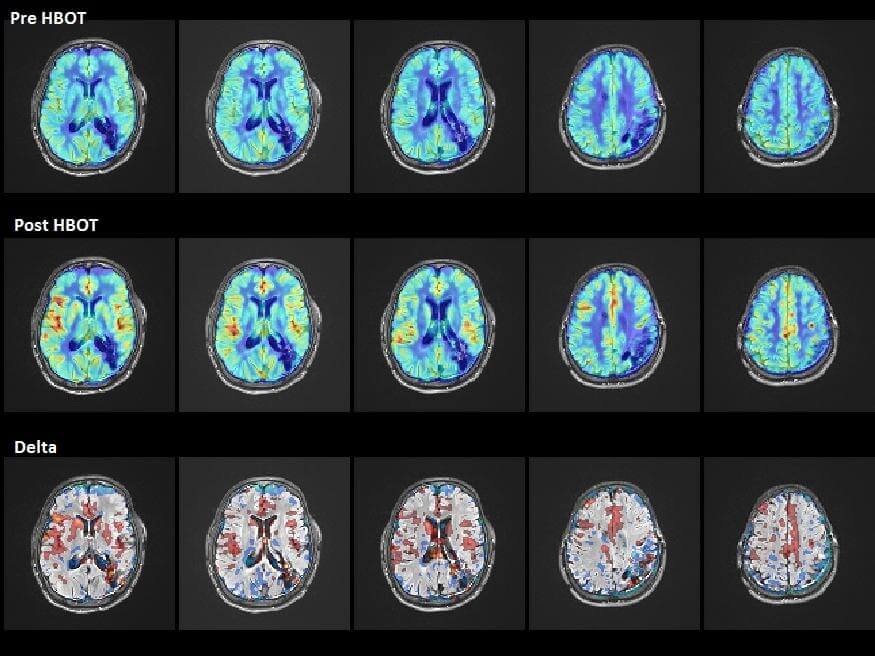
The Groundbreaking Therapeutic Approach of HBOT
An up-and-coming therapy for long-term stroke recovery that has shown promise in clinical research is Hyperbaric Oxygen Therapy (HBOT). HBOT has clear indications of brain-cell rehabilitation in patients suffering from post-stroke disabilities.
HBOT and its apparent benefits for post-stroke patients were studied and reviewed in an article published in the peer-reviewed journal PLOS One:
- The participants were exposed to a unique protocol, including daily HBOT sessions over two months. All the patients showed improved neurological functioning, indicating “that HBOT can lead to significant neurological improvements in post stroke patients even at chronic late stages.”
- Noticeable recovery included “regained speech (almost fluent) and reading capabilities.” Even in patients with less dramatic results, everyday tasks like bathing and dressing became possible unaided by the end of the treatment period.
- Patients were further assessed using brain metabolism imaging (SPECT scans) to examine brain activity during the HBOT treatment. “The SPECT after HBOT demonstrated the disappearance of the perfusion lesions.”
- The study indicated a link between oxygen and stroke—“increasing the plasma oxygen concentration with hyperbaric oxygenation is a potent means of delivering to the brain sufficient oxygen for tissue repair.”
Not only did the study determine significant improvements in patients treated with HBOT, it crucially found that the progression occurred in patients even many months after the stroke event.
The study’s objective was to “evaluate the effects of HBOT started in the late-chronic phase after the acute stroke.” All the patients experienced strokes between six and 36 months prior to the HBOT treatment.
The Aviv Medical Program: The Road to a Better Life
Backed by over a decade of research, the Aviv Medical Program can include HBOT, along with cognitive training, dietary coaching, and physical performance training to help you recover even long after a stroke.
The program aims to offer patients a customized, coordinated, and multidisciplinary health plan to address their specific goals. As the aging process affects every person differently, each Aviv Clinics plan is individualized based on a patient’s post-stroke recovery needs.
Here’s how our process works:
- Assessment: Our dedicated team will conduct a thorough assessment to gain a holistic understanding of your health and craft a personalized health plan.
- Treatment: Under the supervision of Aviv’s medical staff, the treatment plan will entail a variety of health programs that are meant to get you on the road to recovery.
- Analysis: We will track data on how your treatment plan is progressing and make the necessary adjustments along the way.
- Follow-up: Upon conclusion of the treatment, our team will continue to follow up on your progress via an Aviv wearable device. This will allow us to send you reports on your health and performance.
Keren’s Inspiring Story
A holistic treatment plan that addresses the mind and body is key to successful recovery. Former Aviv Clinics patient Keren Trabelsi is a true testament to this fact.
Businesswoman and mother Keren Trabelsi suffered an ischemic stroke, causing paralysis on the left side of her body. Also, cognitive issues made daily tasks difficult, which did not make her feel as capable as she had been before. She sought the help of Aviv Clinics.
Now, 13 months later, she can walk comfortably, type with her left hand again, and engage in cognitive activities (i.e., crossword puzzles, Sudoku, etc.).
“[ Aviv Clinics is] like driving a Ferrari on the road to recovery versus driving like an old beaten-up car….”
Watch her post-stroke recovery story.
Stay current on our client success stories to learn more about what the Aviv Medical Program can help you achieve.
Is the Aviv Medical Program Right for You?
If you’ve been experiencing cognitive or physical challenges since your stroke, the Aviv Medical Program may be able to help. We have treated thousands of patients suffering from various conditions, enhancing their quality of life.
We encourage you to speak with one of our licensed medical staff to see if it’s right for you, as each person’s body, medical history, and circumstances differ. Our staff will take the time to understand your health history, symptoms, and goals. This process will help us determine whether the Aviv protocol is a good fit.
How Long Does It Take to See Results?
Improving physical and cognitive performance does not happen overnight. The Aviv Medical Program requires time and careful compliance to achieve success.
HBOT sessions take approximately two hours daily, five days a week, for 8-12 weeks. However, this timeline may vary across patients. Our clients see members of the Aviv healthcare team for additional therapies or coaching (e.g., cognitive training, dietary coaching, and physical performance training) multiple times each week.
Learn More about Post-Stroke Recovery
If you need help finding a stroke recovery plan, contact Aviv Clinics. Our diverse team of medical professionals is experienced in crafting customized treatment plans that have brought significant and fulfilling results for our patients.
Improving your quality of life begins here.
New Study Shows HBOT Can Reverse the Main Activators of Alzheimer’s Disease and Help Prevent Memory Loss
A groundbreaking new study has brought scientists one step closer to preventing and curing age-related cognitive decline, especially related to early stages of Alzheimer’s disease and dementia.
This landmark study, published in Aging on September 9th, is part of an ongoing program researching age-related cognitive decline. Conducted by the Sagol School of Neuroscience in Tel Aviv and Tel Aviv University, the study marks the first time that hyperbaric oxygen therapy (HBOT)—a non-pharmaceutical method—has proven effective in reversing the main activators and early symptoms of Alzheimer’s disease.
HBOT is a form of oxygen therapy that involves administering 100% pure oxygen to a patient in a pressurized environment. HBOT has been used for decades to treat other conditions, such as non-healing ischemic wounds, but for the first time, it also has shown promise as a potential treatment for reverse the main activators and early symptoms of Alzheimer’s disease and dementia and treat brain and cognitive problems.
A treatment based on this unique protocol is now available at Aviv Clinics Dubai.
Aging and reduced blood flow
The brain is an incredibly complex organism home to a vast network of nerve cells (neurons) that depend on oxygen to thrive. As we age, the number of blood vessels in our brain naturally begins to decline. This causes reduced blood flow to the brain, which in turn causes the brain to receive less oxygen. This decreased blood flow is also known as vascular dysfunction, and it’s a known precursor to Alzheimer’s disease, along with amyloid plaques.
What is an amyloid plaque?
Amyloid plaques are hard, insoluble clusters of proteins formed in the spaces between neurons. They’re formed from beta amyloids—microscopic protein fragments produced by certain cells in the body. In the brain, beta amyloids are found in the fluid between neurons, and a healthy brain usually flushes them out without consequence. However, just like plaque can accumulate on your teeth if you don’t clean them regularly, the same thing can happen in your brain.
As the brain ages, it’s more susceptible to forming amyloid plaques in its blood vessel walls. Once an amyloid plaque forms it can damage the neurons in the brain, ultimately resulting in neuronal death. These plaques are thought to contribute to the progression of Alzheimer’s disease and the cognitive decline associated with it.
For years, scientists have wondered whether or not it’s even possible to dissolve or shrink amyloid plaques. The groundbreaking new study proves for the first time that a unique protocol of HBOT can both reverse amyloid plaques and prevent them from forming in the first place.
How HBOT can reverse amyloid plaques
Study researchers initially used HBOT with mice to understand the effect it has on amyloid plaques. In this first part of the study, researchers delivered HBOT to a group of mice whose brains contained amyloid plaques. The mice received two 60 minute HBOT sessions a day, five days a week for four weeks. The researchers discovered that HBOT significantly reduced the amyloid burden in the mice’s brains, decreasing amyloid plaques by over 30% and shrinking plaques by nearly 19%.

HBOT was also shown to prevent the formation of new amyloid plaques, and the mice exhibited improved performance on cognitive tasks when compared to the control group, giving us evidence that HBOT improved their cognitive functions.
The mice-based study gave promising new evidence that HBOT can be used as both a treatment and a preventative measure for Alzheimer’s disease. Researchers then sought to use the same protocol with human subjects.
The human test group consisted of six patients around age 70, all suffering from mild cognitive impairment. After receiving 60 daily HBOT sessions over a three-month period, the patients saw significant improvements to their cognitive functions, including better memory recall, concentration, and response times.
The researchers theorize that this is due to HBOT’s ability to increase blood flow in the brain. When the brain receives more blood, it receives more oxygen. And when the brain receives more oxygen, it can function at its full capacity.
What this means going forward
The study gives us hope that HBOT can be used as a viable drug-free and non-invasive method to prevent and treat Alzheimer’s disease, bringing us one step closer to preventing and even repairing memory loss and mild cognitive impairment.
“By treating vascular dysfunction, we’re mapping out the path toward Alzheimer’s prevention. More research is underway to further demonstrate how HBOT can improve cognitive function and become an influential tool in the imperative fight against the disease,” affirms Dr. Shai Efrati, one of the investigators conducting the study.
Dr. Efrati is also a medical advisor to Aviv Clinics in The Villages, Florida, which is the only location in the United States to offer the specific HBOT protocol used in this remarkable study. The Aviv Medical Program uses comprehensive testing and assessments before, during, and after the treatment protocol to track progress and provide multidisciplinary clinical team support.
For more information about the Aviv Medical Program, HBOT treatment, and how it may help your brain health, please contact us.
To read the study published in Journal Aging – click here.
Surprising Ways Mixed Nuts Can Benefit Your Health
Exploring the Powerful Benefits of Nuts for Your Cognitive and Overall Health
For a nutrient-dense snack that contributes to weight management, while also providing advantages for heart and brain health, consider incorporating a daily portion of assorted nuts into your eating routine.
Nuts and seeds are a nutritional powerhouse, boasting low carbohydrate content and an abundance of fiber, protein, antioxidants, crucial vitamins and minerals, as well as an assortment of beneficial phytochemicals. Research suggests that including nuts and seeds in your diet could potentially diminish the likelihood of various conditions such as elevated blood pressure, heightened cholesterol levels, and inflammation, which are linked to the development of ailments like heart disease, diabetes, cancer, and stroke.
Nutritional profile of mixed nuts
While nuts and seeds are packed with essential nutrients that can enhance a balanced diet, it’s advisable to consume them in moderation due to their elevated fat and calorie content. It’s important to note that the fats found in nuts and seeds are primarily of the unsaturated variety, including beneficial omega-3 fatty acids that promote heart health. Nonetheless, like any indulgence, overconsumption can undermine your efforts to opt for healthier, low-fat, and low-calorie snack choices.

What makes nuts and seeds so beneficial?
Nuts and seeds are considered superfoods, offering a multitude of health benefits even in small quantities.
Here are some advantages:
- Positive impact on Lipid Profile: consuming nuts in moderation is unlikely to adversely affect your lipid panel. In fact, research suggests that they may contribute to reduced bad cholesterol levels.
- Source of Phytosterols: Nuts and seeds also include sources of phytosterols, a substance that holds potential in cholesterol reduction. These naturally occurring sterols contribute to the health benefits of these foods.
- Rich Source of Omega-3 Fatty Acids: While commonly associated with fish, omega-3 fatty acids are also prevalent in nuts. These essential nutrients play a role in maintaining the structural integrity of cell walls throughout the body. Maintaining a balanced intake of omega-3 fatty acids is also crucial for preventing potential imbalance linked to neurodevelopmental disorders.
- Rich in Dietary Fiber: Nuts and seeds offer a significant source of dietary fiber, which plays a key role in regulating the immune system, combating inflammation, and promoting regular bowel function. This fiber content is particularly beneficial for maintaining gut health. For individuals aged 50 and above, the Institute of Medicine recommends a daily intake of 25 grams for women and 30 grams for men. A mere handful of nuts supplies nearly four grams of fiber. A diet high in fiber can also support the growth of beneficial gut microbes, which play a role in producing short chain fatty acids, which is important for gut health and can potentially influence brain health through various pathways.
- Rich in Vitamin E and L-arginine: Vitamin E, present in substantial amounts in nuts and seeds, contributes to the prevention of arterial plaque formation. This plaque buildup, if unchecked, can lead to conditions like heart disease, angina, and cardiac arrest. Additionally, L-arginine, a component found in these foods, aids in enhancing blood flow by increasing the flexibility of artery walls and reducing the likelihood of blockages.
- Good source of protein: Nuts and seeds encompass varying levels of protein content, making it beneficial to consume a diverse range. Protein is essential for cellular repair and regeneration. For optimal intake, protein should constitute approximately 10 to 35% of your daily calorie consumption. This equates to around a minimum of 50 grams of protein per day for adults.
- Antioxidant Powerhouses: Within nuts and seeds lie a rich reserve of antioxidant vitamins and phenolic compounds. These compounds play a role in reducing inflammation and alleviating oxidative stress. Oxidative stress triggers an internal imbalance, allowing an excess of free radicals within the body’s cells. Research shows that by neutralizing these free radicals, nuts and seeds have demonstrated the ability to effectively mitigate oxidative stress, thereby promoting overall health and reducing the undesirable effects of aging.
- Other possible benefits to include:
- Support the production of neurotransmitters, such as dopamine and serotonin, which regulate mood and behavior. Thus, reducing the risk of depression and anxiety.
- Boost energy levels and combat fatigue, which can positively impact cognitive performance.
- Nuts have a low glycaemic index and can help regulate blood sugar levels. Stable blood sugar levels are important for brain health and reducing the risk of cognitive decline.
While nuts can be a beneficial component of a brain-healthy diet, it’s important to adopt a comprehensive approach to brain health that includes a well-balanced diet rich in a variety of nutrient-dense foods, regular physical activity, adequate sleep, stress management, and cognitive engagement.
How often should nuts and seeds be eaten?
As mentioned above, nuts and seeds are calorie-dense, so portion control is key. A standard serving size is about 1 ounce (28 grams) per day, which is roughly a small handful. This provides nutritional benefits without excessive calories. Substitute between different types of nuts and seeds to ensure you are getting a broad spectrum of nutrients.
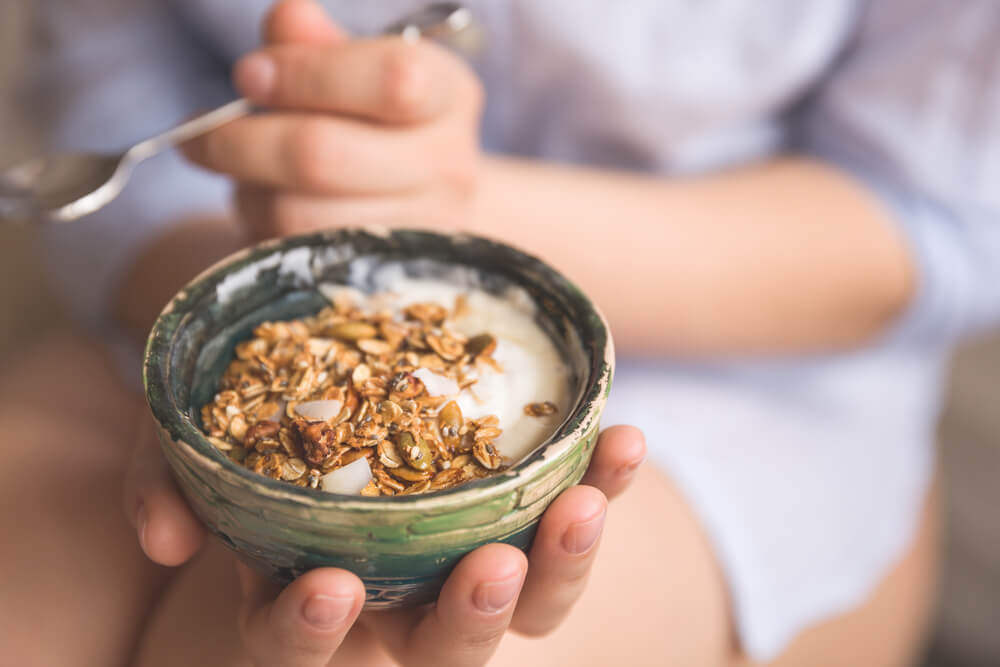
How to incorporate them into your diet
- Add pumpkin seeds to salads, oatmeal, rice, sweet potatoes, and quinoa for added flavor, fiber, and texture.
- Incorporate nuts and seeds—such as pine nuts, sunflower seeds, chia seeds, and pumpkin seeds—into smoothies. These choices are excellent sources of protein, fiber, and omega-3 nutrients.
- Create your own trail mix by blending nuts and seeds, and then adding the mix to yogurt or enjoying a handful as a snack.
- Nutty Pesto: Blend nuts like pine nuts or walnuts into homemade pesto to serve over pasta, grilled vegetables, or as a dip.
- Stir-Fries: Sprinkle seeds (e.g., sesame or pumpkin seeds) over stir-fried dishes to add a nutty crunch.
- Baked Chicken or Fish: Use crushed nuts or seeds as a coating for baked chicken or fish, adding a flavorful and nutritious crust.
- Fruit Parfaits: Layer yogurt, fruits, and a sprinkle of chopped nuts or seeds to create a nutritious and indulgent dessert.
- Nutty Bites: Create small energy bites by combining nuts, seeds, dried fruits, dates, and honey. Roll them into bite-sized balls for a sweet treat.
- Frozen Yogurt Bark: Mix chopped nuts and seeds into Greek yogurt, spread it onto a baking sheet, and freeze for a delicious frozen dessert.
In the pursuit of optimal brain health, nutrition plays a crucial role.
Nutrition stands as a core component within the Aviv Clinics Dubai by DP World Medical Program. Building the right nutrition plan involves a comprehensive analysis, taking into account your dietary intake, habitual behaviors, personal preferences, existing health conditions, and aspirations. The outcome is a personalized roadmap intended to provide your brain and body with the precise combination of nutrients and energy necessary for the rejuvenation process.
Our approach is built upon a comprehensive assessment of your dietary intake, habits, preferences, health conditions, and individual objectives. Throughout the Program, your dedicated dietitian closely monitors your nutritional consumption to ensure that you are deriving the maximum benefits as you make progress.
If you’re interested in understanding how our program operates and its advantages, Contact the clinic to learn more.
